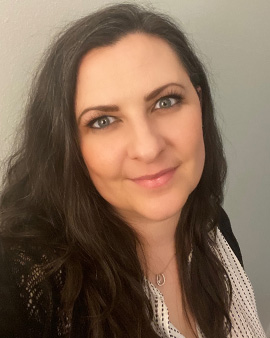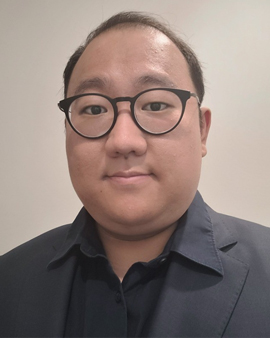Cell & Gene Therapy Symposium Highlights Cutting-Edge Research at Drexel
July 25, 2023
By Nancy West
Drexel faculty researchers working on the cutting edge of cell and gene therapy shared insights and information about their groundbreaking work at the Cell & Gene Therapy Symposium held in May 2023. Faculty from across the University spoke about their visions to treat or even cure devastating conditions ranging from neurodegenerative disease to idiopathic pulmonary fibrosis to HIV, and debilitating injuries including heart attacks, spinal cord injury and acute kidney injury. Their expertise spanned diverse disciplines from the College of Medicine, College of Engineering and the School of Biomedical Engineering, Science and Health Systems.

Kara Spiller, PhD
Developed by Kara Spiller, PhD, professor, School of Biomedical Engineering, Science and Health Systems, and organized by the Office of the Provost, the Office of Research & Innovation and the Drexel Solutions Institute, the symposium’s goals were to raise awareness of cell and gene therapy research underway at Drexel, enhance collaboration among researchers across the University and foster interdisciplinary research by bringing people together in person.
“At Drexel, we have researchers from diverse backgrounds and interests striving to advance cell and gene therapy,” notes Spiller. “The next phase of research in this area will require all of their input. We must capitalize on their diversity of expertise to develop new, innovative research pathways, as well as educational initiatives.”

Mary Genevieve Carty, MS, MHEd
“The symposium fueled enthusiasm for cell and gene therapy because it makes miracles happen,” says Mary Genevieve Carty, MS, MHEd, director and senior program manager, Department of Microbiology & Immunology, who helped bring the symposium to fruition. “It literally can make the blind see again. We are seeing this with new drugs such as Spark Therapeutics’ Luxterna. At Drexel, we’re working on some of the scientific underpinnings that support these revolutionary breakthroughs, and it’s really inspiring."
She continues, “The fast pace in which this is happening is really quite unbelievable. This time last year, there were eight FDA-approved gene therapies and now, one year later, there are 30, almost quadrupling in number. We are right on the cusp of taking to market gene therapies for conditions like hemophilia and sickle cell anemia, which is going to affect a huge swath of the population. The hope and promise that comes from gene therapy cannot be overstated.”

Liang Oscar Qiang, MD, PhD
One of the symposium speakers from the College of Medicine, Liang Oscar Qiang, MD, PhD, assistant professor, Department of Neurobiology & Anatomy, called the event “a great experience.”
“Face-to-face contact is very valuable,” he says. “I met people who I normally don’t interact with and had the opportunity to talk with some colleagues who I hadn’t seen in a long time. To learn about what other researchers are doing is quite eye-opening. You can see some of what they’re doing on their web pages, but to see them present and learn what they’re doing in detail is far more useful than just reviewing their web page introductions. And the opportunities for collaboration are enormous.”
Qiang spoke about his gene and cell therapy research in neurodegenerative disease, specifically Alzheimer’s disease (AD) and AD-related dementia. “As a scientist, I believe in hypothesis-driven studies and mechanistic analyses,” he says. “I want to know the causative pathways, essential modules and molecules involved in disease progression. In my research, we are trying to find the underlying mechanism that leads to tauopathies, which are neurodegenerative disorders such as Alzheimer’s disease, characterized by the deposition of abnormal tau protein in the brain.
“This project seeks to understand how certain changes in the brain's internal structure, specifically related to tiny structures called microtubules, are caused by two types of abnormal situations found in tauopathies,” he explains. “They are known as ‘reduced functional tau’ and ‘toxic oligomeric tau aggregates.’” By studying these two mechanisms, we hope to gain insights into the underlying causes of tauopathies, which could lead to better treatments for these neurological disorders.
Qiang’s lab is using human induced pluripotent stem cell derived CNS organoid and assembloid models. “By employing this cutting-edge technology, we have the ability to extract skin cells from a patient, and reprogram and develop them into fully functional brain cells and three-dimensional central nervous system (CNS) tissues. This approach allows us to effectively model various neurological diseases in a laboratory setting,” he notes. “Consequently, we can conduct extensive drug screening experiments and identify potential therapeutic candidates for treating these conditions. Additionally, the generated functional brain cells and CNS tissues hold immense promise as a potential source for transplantation, thus paving the way for personalized medicine strategies in the field of neurodegenerative disorders.”

Michael Lane, PhD
Among the nearly 140 faculty and students who attended the symposium was Michael Lane, PhD, associate professor, Department of Neurobiology & Anatomy. His research is focused on developing novel and innovative cell therapy strategies for repairing damaged neural tissue, particularly spinal cord injury. Most recently, his lab has been collaborating with the Gladstone Institute in California to use human induced pluripotent stem cells to make neural stem cells or neural progenitor cells.
“With this technology, we can engineer specific types of cells, and that’s where my research team is a bit ahead of the game for a lot of cell therapies being used in spinal cord injury,” he explains. “We’re hoping that it can be applicable more broadly to treating neural injury and disease. Personally, I’m very invested in finding ways to improve the translational path to treatment.
"The symposium was a great event and I hope it continues to happen, bringing people from different fields together to learn what we’re all doing and what we hope to do in the future,” Lane continues. "These discussions not only inform what you want to do but give you new ideas, especially if it’s outside your own area of expertise. It gives you new ways of thinking about your own research so you can develop different research questions or even identify things that might represent new therapies. It’s good to see an investment and interest across the entire University in the growing field of cell and gene therapy.”

Kenneth Kim, MS
Kenneth Kim, MS, a PhD student in the Microbiology & Immunology program who conducts research in Drexel’s Tissue Instructive Materials Lab, also found the symposium valuable. “Our research focuses on the development of dynamic biomaterials and their application to address challenges in the area of immunoengineering, organ injury and cardiovascular disease,” he explains. “At the symposium, I learned about Drexel research across many departments that is transforming medicine with many different approaches to create effective therapies.
“I was also interested to learn about the hard work being done by local companies such as Bristol Myers Squibb and Spark Therapeutics to create breakthroughs in cell and gene therapy,” Kim adds. “I really appreciated having the opportunity to meet other researchers in person and build new connections and collaborations for research. I hope Drexel offers more symposiums like this in the future.”
Cell & Gene Therapy Symposium Speakers
Cell Therapy
- Wendy Clemens Trigona, Vice President, Bristol-Myers Squibb
- Kara Spiller, School of Biomedical Engineering, Science and Health Systems, Immune cell therapy for regenerative medicine
- Shaoping Hou, Department of Neurobiology & Anatomy, College of Medicine, Rebuilding supraspinal regulation of sympathetic input to improve cardio-electric disorders after spinal cord injury
- Yinghui Zhong, School of Biomedical Engineering, Science and Health Systems, Biomaterial-enabled cell therapy for neuronal repair
- Christopher Rodell, School of Biomedical Engineering, Health and Science Systems, Biomaterials for cell therapy
- Masoud Soroush, Department of Chemical and Biological Engineering, College of Engineering, mRNA vaccine manufacturing
Gene Therapy
- Federico Mingozzi, Chief Science and Technology Officer, Spark Therapeutics
- Liang Oscar Qiang, Department of Neurobiology & Anatomy, College of Medicine, Anti-sense oligonucleotides for neurodegenerative disease
- Emanuela Piermarini, Department of Neurobiology & Anatomy, College of Medicine, Gene therapy for neurodegenerative disease
- William Dampier, Department of Microbiology & Immunology, College of Medicine, Gene editing to cure HIV
- Catherine von Reyn, School of Biomedical Engineering, Science and Health Systems, Optogenetic control of neurons
- Wei-Heng Shih,,Department of Materials Science and Engineering, College of Engineering,RNA/DNA-based biosensors
- Michele Kutzler, Departments of Medicine and Microbiology & Immunology, College of Medicine, DNA vaccines for infectious disease